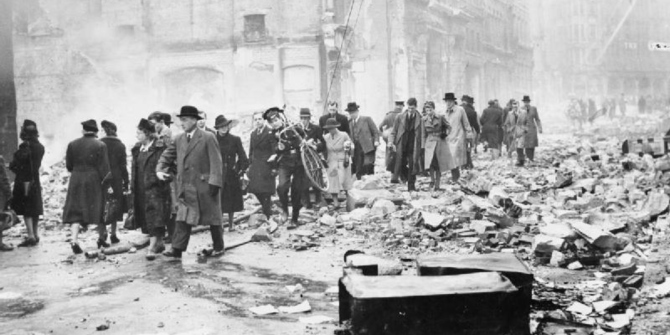 The recession has caused many shop to go bankrupt. This is not only symptomatic of the economic downturn; structural factors are also at play. Tim Leunig argues that policymakers need to be more realistic by providing more space for high end venues rather than low end venues for which there is little demand.
The recession has caused many shop to go bankrupt. This is not only symptomatic of the economic downturn; structural factors are also at play. Tim Leunig argues that policymakers need to be more realistic by providing more space for high end venues rather than low end venues for which there is little demand.
Recessions mean bankruptcies, and bankruptcies in the retail sector mean boarded up high streets. Between 2008 and 2010 the number of empty shops has gone up five fold. Only one shop in 40 was empty in 2008, but the rate is now one in seven. It is higher still in some places – one in five in the North West as a whole, one in four in Blackburn, Grimsby, and Walsall, and one in three in Margate.
In a market economy prices adjust: rents fall until shops are cheap enough that new businesses become economic. That is happening a bit: the Financial Times states that rents on renewed leases in struggling regional cities typically fall 30 percent. This has been sufficient to stabilise vacancy rates since October 2010. One landlord said: “The common cry from retailers is halve the rent, or we’re off”. The market is working, if slowly and sluggishly.
In many ways the retail market mirrors the job market. Unemployment rose initially, but has broadly stabilised since. What is worrying is that, like unemployment, there may be structural factors which mean that some shopping areas will never come back.
The last 50 years have seen a big shift in labour demand away from the low skilled, and towards the highly skilled. The wages of manual workers have fallen relative to graduates and footballers, but we are still left with a lot of people who are out of work even in good economic times.
The same seems to be happening in retail. On the same day that the Financial Times reported that high streets in poorer areas were struggling, it also reported that Ferragamo agreed a new record high rent – almost £1,000 per square foot per year – for its shop in Bond Street. Bond Street is Champions League retail. Margate and Grimsby are not.
Policymakers need to be realistic. I bought a set of Tefal pans from Amazon yesterday. I could have bought them from Argos, or John Lewis. I expect that they were cheaper from Amazon, but I didn’t check, because the convenience of Amazon outweighed any likely saving. That part of the high street is all but dead.
In contrast, I imagine that people who buy Ferragamo leather goods want to see them before they buy them. They sell wallets for £725, and handbags for over £1,000. Retailers selling these items need retail space, and it needs to be near the people with money.
Prices adjust in a market economy to give a signal to entrepreneurs about what to do more of, and what to do less of. The signals are clear: we need to provide more shopping space in high end venues, primarily in London, and less space in places where there is little demand.
The same is true for people: we need to increase skill levels, so that there are fewer unskilled workers who find it hard to get work, however determined they are, and more graduates who find it relatively easier to be employed.
Please read our comments policy before posting.







